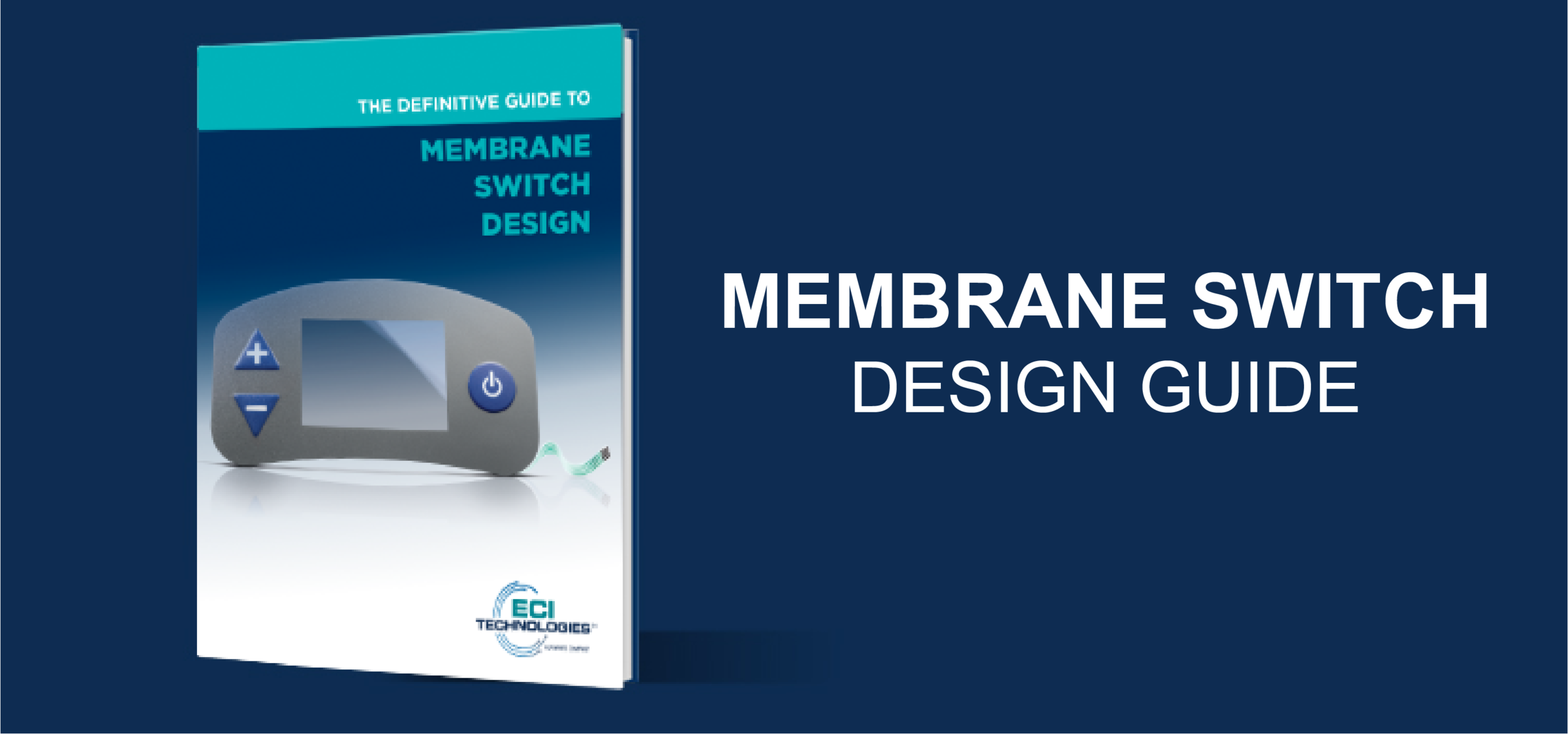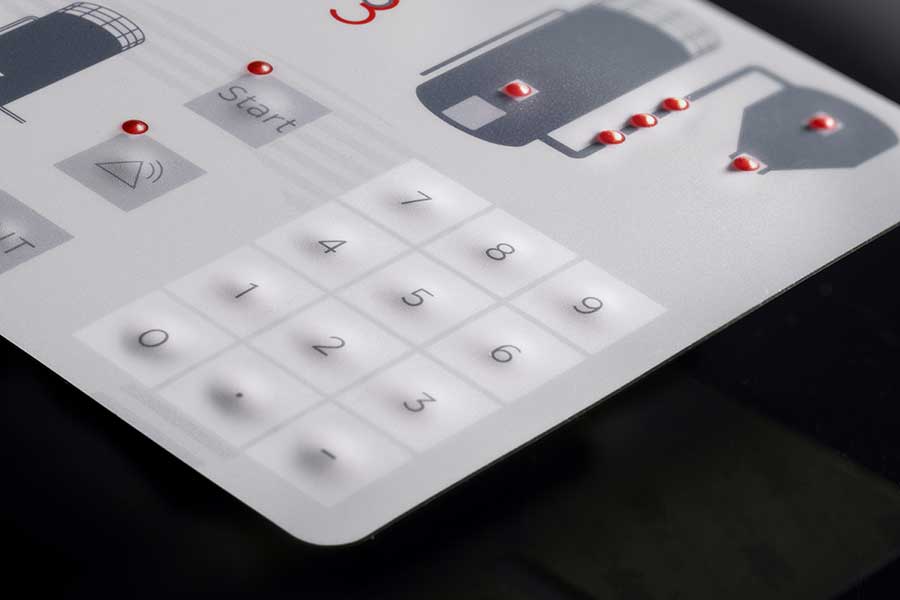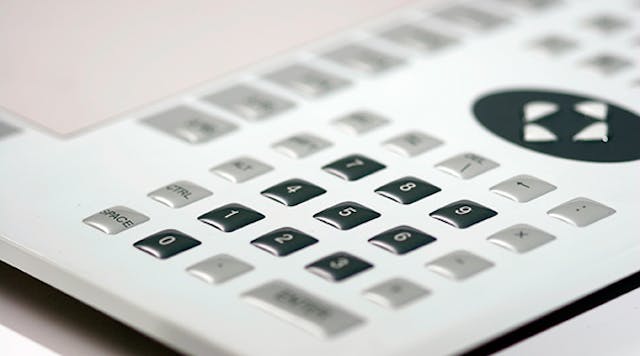Choosing the Right Membrane Switches for Your Product’s Needs
Choosing the Right Membrane Switches for Your Product’s Needs
Blog Article
Understanding the Relevance of Membrane Switches in Customer Interfaces
Membrane buttons are essential parts in the layout of effective customer interfaces, assisting in not only capability however also boosting aesthetic allure and individual communication. Their special features, such as resistance to personalized styles and ecological elements, make them ideal for a diverse selection of applications across numerous markets. As we discover the future patterns and numerous advantages linked with Membrane innovation, it comes to be clear that these switches are extra than just elements; they stand for a convergence of advancement and practicality. The ramifications of this modern technology on user experience deserve examining additionally.
What Are Membrane Buttons?

The spacer layer, which contains adhesive residential or commercial properties, permits the separation of the circuit layer from the overlay, ensuring that the button continues to be in a non-activated state till pushed. When pressure is related to the overlay, it presses the spacer layer, linking the space and completing the circuit in the underlying layer. This design not just lowers the physical room required for conventional mechanical switches yet additionally improves the sturdiness of the device, as Membrane buttons are typically resistant to dirt, wetness, and other ecological aspects.
Typically found in applications varying from consumer electronics to clinical devices, Membrane buttons are essential to modern-day innovation, providing a user-friendly and reliable interface that aligns with modern design needs.
Advantages of Membrane Switches
While countless switch modern technologies exist, Membrane Switches offer distinctive advantages that make them specifically desirable in numerous applications. One of the key benefits of Membrane switches is their small design, which permits space-saving implementations in gadgets where property is limited. Their slim profile not just boosts aesthetic allure but likewise promotes lightweight building and construction.
Another considerable benefit is their resistance to environmental aspects. Membrane switches are usually secured against wetness, dirt, and impurities, making them suitable for usage sought after environments, such as medical tools and commercial tools. This durability extends the lifespan of the switch, minimizing upkeep costs and improving reliability.
In addition, Membrane switches can be personalized to satisfy details design requirements, integrating special graphics and shades that boost user interaction. Their tactile comments choices can likewise be customized to give a satisfying user experience. Additionally, Membrane switches are economical, specifically in high-volume applications, as they can be generated successfully.
Applications in Numerous Industries

In the consumer electronic devices industry, Membrane buttons prevail in gadgets such as microwaves, washing equipments, and push-button controls. Their tactile responses and visual options boost individual experience while offering a streamlined, contemporary look. In addition, vehicle producers make use of Membrane buttons in dashboard controls and infotainment systems, where room is limited, and customer interaction is crucial.
In addition, the commercial sector leverages Membrane switches in control panels for equipment and equipment, enabling intuitive procedure in frequently harsh atmospheres. Their resistance to chemicals and moisture makes sure longevity and integrity in these applications. In general, the flexibility of Membrane Switches contributes dramatically to their extensive use, making them vital in various technical domain names.
Design Factors To Consider for Membrane Switches

When developing Membrane buttons, several essential factors to consider must be taken into consideration to make sure optimum functionality and individual experience. The option of materials is important; basics picking sturdy, high-quality substrates can improve the switch's durability and resistance to environmental elements such as wetness and temperature changes.
Secondly, the style of the look what i found graphic overlay ought to prioritize clarity and ease of use. Icons and text have to be understandable, and the format needs to promote instinctive communication (membrane switches). Furthermore, tactile feedback is important; integrating a responsive dome or other mechanisms can enhance the individual experience by offering physical verification of activation
An additional crucial element is the switch's electrical efficiency. Developers should guarantee that the conductive traces are properly designed to decrease resistance and prevent signal interference. This involves analyzing the needed actuation pressure and ensuring compatibility with the digital elements they will user interface with.

Future Fads in Membrane Modern Technology
As innovation proceeds to development, Membrane buttons are positioned to progress significantly, driven by technologies in materials and making techniques. One arising trend is the unification of advanced products, such as adaptable substrates and conductive inks, which boost resilience and lower the overall weight of Membrane buttons. These materials not just boost the tactile action but likewise enable the design of switches that can hold up against harsher environmental problems.
In addition, the integration of touch-sensitive innovations is changing traditional Membrane Switches right into even more interactive interface. Capacitive touch sensors installed within Membrane button panels can provide a much more receptive and instinctive individual experience, straightening with the expanding demand for sleek, contemporary styles in customer electronic devices.
Additionally, developments in printing methods, such as electronic and 3D printing, make it possible for quick prototyping and customization of Membrane switches. This flexibility allows producers to respond faster to market needs and customer choices.
Last but not least, sustainability is becoming a significant focus, with manufacturers exploring environmentally friendly materials and processes. As these trends unfold, the future of Membrane technology promises enhanced capability, visual allure, and ecological duty, strengthening their function in sophisticated individual interfaces across various industries.
Verdict
In conclusion, Membrane Switches represent an important element in the design of individual interfaces, combining performance with aesthetic flexibility. As advancements in technology continue, the advancement of Membrane buttons is expected to further fine-tune individual interfaces, driving development and enhancing usability in a significantly complex technical landscape.
Membrane switches are indispensable elements in the layout of efficient customer interfaces, helping with not just functionality however additionally enhancing visual allure and user communication.Membrane Switches serve as a crucial component in various individual interfaces, promoting a seamless interaction in between users and electronic tools.While numerous switch innovations exist, Membrane Switches offer distinct advantages that make them specifically preferable in various applications.Furthermore, Membrane buttons can be tailored to meet particular style demands, including unique graphics and colors that enhance individual interaction.In final thought, Membrane Switches stand for an essential Homepage part in the design of user interfaces, combining performance with aesthetic versatility.
Report this page